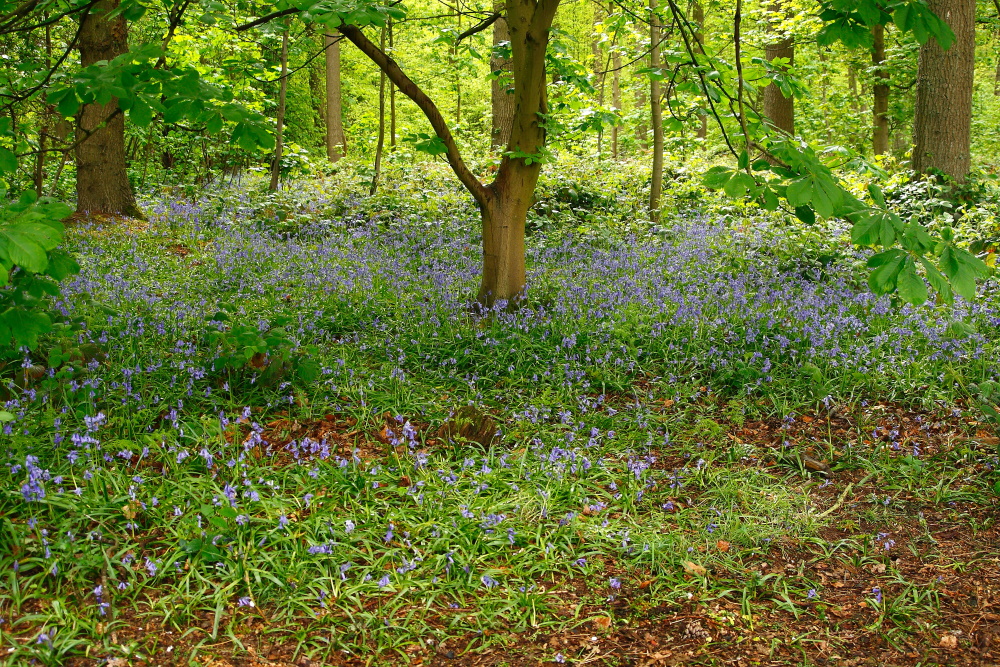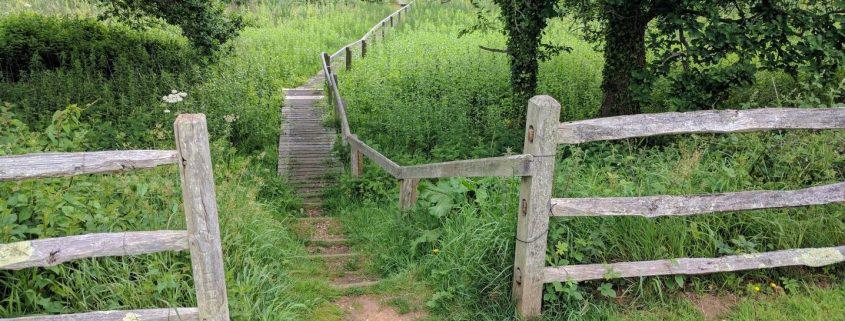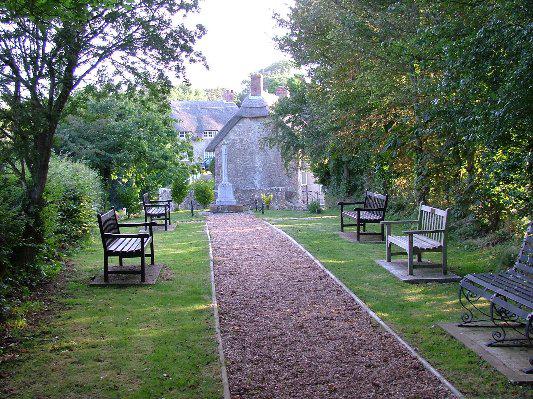-
07528 339937
CLICK HERE for a full version of the history.
Godshill is one of the ancient parishes that existed before the compilation of the Domesday Book, the first recorded spelling being Godeshulle. The church was given by William Fitz-Osbern, who died in 1070, to the Abbey of Lyra in Normandy.
In 1090, Richard de Redvers, Lord of the Island, gave the Manor of Appuldurcombe, which comprised the best part of the parish of Godshill, to the Abbey of Montebourg in Coutances, Normandy. It was originally a small priory of Benedictine monks, situated a short distance from the present ruin.
The house and lands came to the Worsley family through the marriage of Anne, daughter of Sir John Leigh to Sir James Worsley. In 1557, Dame Anne willed 20 marks for erecting a free Grammar School in Godshill but this was never built and the old Chantry Priest's House continued to be used. In 1824 the old school was pulled down, the Old Vicarage built in its place and the school rebuilt in its present position by Lord Yarborough and restored in 1848 as a misappropriated Grammar School under a scheme of the Charity Commissioners.
Stenbury Manor, originally surrounded by a moat was the seat of the de Aula family soon after the Norman Conquest. It was pulled down and rebuilt in the 16th century and the moat was filled in during 1727.
Various other smaller manors include:
- Bagwich, which is listed in Domesday under the name of Abaginge;
- Bathingbourne, an ancient manor first mentioned circa 960;
- Bridgecourt, not a Domesday manor - first mentioned in the 13th century, taking its name from a bridge over the river Yar;
- Lessland, one of the manors reverting to the crown in 1075 following the rebellion of Roger de Breteuil. The current building was erected in 1722;
- Roud, originally a Norman manor, rebuilt in the 17th century;
- Sandford, one of the many valuable manors owned by the king in 1086.
All Saints Church dates largely from the 14th century and is the fourth on this site. Sir John Oglander, historian of the 17th century, says in his memoirs that the first church "wase bwylt in ye rayne of King Edward the Confessor".
The hill on which the church stands was once a place of pagan worship and legend tells that the building of a church was begun at the foot of the hill but that on three successive nights the stones were removed unseen to the site of the present church. Work was restarted on the first two mornings but on the third day it was assumed that God wished the church to be built on the hill, hence the name Godshill.
All Saints is renowned for its mid-15th century mural of the Lily Cross. Painted over during the Reformation, it was rediscovered in 1842.
Godshill church has a peal of six bells. They were recast in 1887 from the old peal which had been recast in 1815 with the village gun of 1543 being cast into the tenor bell.
The cluster of cottages by the church are reputed to have been built in the 15th century, possibly to house the masons rebuilding the church. The Old Bell was once the Bell Inn and continued as a public house until the late 1920's; Church Hill Cottage was a smallholding with dairy produce being sold from a room at the front; whilst Church Gate Cottage may have been the Sexton's cottage.
The present Hill Cottage was originally four labourers' cottages but became an antique/show cottage between the wars. Queen Mary visited on a regular basis and took tea at Essex Cottage. Hill Cottage is no longer a listed building.
Tea rooms have long been a standard attraction in Godshill with charabanc trips. Another royal visitor was Princess Beatrice bringing her daughter, Queen Ena of Spain to the Griffin, also for tea.
Bridgecourt Mill was shown on a map of 1759 as Bridge Mill but now only the ruined walls remain. A long mill-pond was created west of Bridgecourt. Bridgecourt Cottage was a former brewhouse.
The Poorhouse in the village closed in 1770 when St Mary's Hospital was built to house all the poor of the Island.
The Hermitage, built in 1813 was the home of Michael Hoy, a merchant trading with Russia, who was Sheriff of London 1812/13. He erected the Hoy Monument in Chale Parish to commemorate the 1814 visit of Tsar Alexander. The Hermitage subsequently became the first Island Youth Hostel in 1935.
In the 19th and early part of the 20th century, as well as the Old Bell Inn, there was the Griffin Hotel; a blacksmith (now the Old Smithy); a carpenter/undertaker; a grocers and clothing store (now the Batswing); two stonemasons; and a bakehouse (now the Taverners) getting its flour from Bridgecourt Mill.
The post office has been at several venues, starting in Leal's Bakery Shop (The Taverners), moving to Syringa with all dealings being carried out through the window of the building, then to Welcomes (now Chocolate Island) and finally to its current location.
Godshill became a Civil Parish under the Local Government Act 1894. In the 2001 census, there was a population of 1465.
The railways arrived in 1875 but ceased running through Godshill in 1952.
Godshill Model Village was opened in 1952 depicting Godshill and Shanklin Old Villages on a scale of 1:10.
Candles and oil lamps were the main source of light until gas came from Shanklin. Electricity did not arrive until 1956.
On the hill to the south of Godshill is the obelisk erected by Sir Richard Worsley in 1774 in memory of his ancestor, Sir Robert. Originally 70 ft high, it has been badly damaged by lightning on 13 March 1831 but was restored in 1983.
In August 1968 the first IW Festival was held at Ford Farm, attended by 10,000. On a stage constructed of two trailers, acts such as Jefferson Airplane and T Rex performed. It was considered the first great UK rock festival, even though only running for one day.
Current hamlets are Roud and Sandford and until the 1970's, Rookley was a ward of Godshill Parish Council.
The War Memorial was originally situated directly opposite Godshill School in the frontage of Rosebank but was moved to the Garden of Remembrance on the brow of Church Hill in 1999 after the land was donated for a peppercorn rent by the Earl of Shannon after approaches by the Royal British Legion.
Godshill has many listed buildings, the majority being Grade 2 but All Saints Church, Godshill is Grade 1.
In the 1950's, land off Newport Road was donated by the late Mrs May for the use of the youth of the village. This is now the village playing field. An area of the field for a scout hut was granted by the Charity Commission, with a covenant that its use should be restricted to the youth of the village.
The second open-space in the village - (Rongs Field) now Central Mead - is in the Trusteeship of Godshill Parish Council.
The Glebe area belonged to the church until the 1920's. Early maps show a Parish Room on its north-west aspect and this was presumably the forerunner to the current Village Hall, which opened in 1928. The Homestead (now Yeomans) was the farmhouse for the Glebe.
With its large free car park, Godshill is the most visited village on the Island with many of the local attractions remaining open all year round.
Author: Rick Diment
October 2013
CLICK HERE for a full version of the history.


